
A brief type history by David Legg
The PBY Catalina series of flying boats was originally conceived to meet a military requirement and its development built on Consolidated’s experience with earlier flying boat designs. These earlier types had included the commercial Model 16 Commodore and the military Model 22 Ranger/P2Y series.
The Commodore was itself a development of the Model 9 Admiral, or XPY-1 to give it its US Navy designation. The XPY-1 was designed as a US Navy flying boat with the capability of linking the United States West Coast with Hawaii. It was a metal twin-engined monoplane – the first US Navy monoplane seaplane – with a crew of five, the two pilots being in an exposed cockpit, the navigator in the bow, the radio operator in the centre section and the engineer aft. Armament consisted of one 0.30 in machine gun forward of the cockpit and two further 0.30 in guns in an open area further back along the upper hull. Power came from two 450 hp Pratt & Whitney R-1340-38 Wasp engines, although, later, a third engine was installed above the wing. The XPY-1 first flew on 10th January 1929, from Anacostia in Maryland, but it was destined to be a limited edition of one, the Navy ordering the cheaper Martin XP2M and P3M flying boat instead. The solitary Admiral was given the military serial A-8011.

The start of the line – the Model 9 Admiral or XPY-1 Photo: David Legg Collection
Although the Admiral was not a success in terms of military orders, it did give rise to interest from the commercial sector, and this led to the Consolidated Model 16, or Commodore. Design changes included more powerful engines in the shape of two Pratt & Whitney R-1860 Hornets Bs of 575 hp each and a hull that could accommodate up to 32 passengers in some luxury. Initially, it had been hoped that the new type would be sold to the Detroit and Cleveland Navigation Company, which had plans to use the Commodore between destinations around Lake Erie, and to Pan American Airways, but in the event no orders materialised. However, orders did come from Tri-Motor Safety Airways, which wanted to use the type to link North and South America. The prototype first flew on 28th September 1929, and in due course fourteen were built at the Consolidated factory at Buffalo, New York. All those built operated with the launch customer, which, by the time of the first delivery, had been renamed New York, Rio & Buenos Aires Line, or NYRBA, only to be merged with Pan American in September 1930. Production of the Commodore ceased in the following November.
Although the fact that Consolidated’s founder Reuben Fleet was directly involved in the management of NYRBA clearly enabled his company to produce and sell his own design, the Commodore none-the-less indicated that Consolidated was able to build a successful flying boat for commercial use. The next flying boat to be built by the company, however, was another design for the military.
Again based on the earlier, unsuccessful Model 9 Admiral monoplane flying boat, the Model 22 Ranger shared the same upper wing but also incorporated a lower, shorter-span wing supporting the two floats. It too had a covered cockpit for the flight crew as on the Commodore, and it was at first powered by three Wright R-1820E Cyclones of 575 hp, later reduced to two. Given the US Navy designation XP2Y-1 and serial Bu8939, the initial example took to the air for the first time on 26th March 1932.
Consolidated went on to produce another 23 twin-engined P2Y-1s for the US Navy, and these were allocated serials Bu8986 to 9008. The final aircraft was completed in June 1933, and was modified a few months later to become the first PY2-2 powered by two 750 hp R-1820-88s. These engines were mounted upon the wing leading edge rather than between the hull and the upper wing as on the P2Y-1. Nearly all of the latter were subsequently upgraded to P2Y-2 standard. The two unconverted aircraft were exported, one to Colombia for air force use and the other to Japan. Incredibly, the South American aircraft remained in service until as late as 1948, by which time it had been supplemented by a number of Catalinas. The Japanese example was used commercially during World War Two.
There followed a further 23 P2Y-3s (Bu9551 to 9571 and 9618 to 9619) of similar configuration to the P2Y-2 but with uprated R-1820-90 engines and greater fuel capacity. A further six were produced to meet an Argentine Navy order in mid-1936, and these flew on until 1947 when, like the Colombian P2Y-1, they were replaced by Catalinas. The US Navy aircraft were used by various patrol squadrons, and many ended up at NAS Pensacola in Florida, where they were used to train flying boat crews, including many who were later to become RAF Catalina personnel.

A twin-engined P2Y-3 at San Diego showing the high strut-mounted wing and much shorter shoulder-mounted lower wing with floats attached Photo: David Legg Collection
The Commodore and Ranger designs only bore a passing resemblance to the PBY inasmuch as the side profile of the lower hull and step were similar. Both types showed evidence of reliability and the capability of long distance flight for both military and commercial users, and it was whilst the early examples of the P2Y series were being produced that the Consolidated designer, Isaac Laddon, began design work on what was to eventually become the Consolidated Model 28/PBY Catalina series.
This design was known initially by its military designation XP3Y-1, and was prompted by a 1933 United States Navy contest inviting manufacturing companies to submit entries to meet the requirements for a military patrol flying boat with an operational range of 3,000 miles and a cruise of 100 mph. Consolidated submitted its design and the US Navy liked what it saw. Reuben Fleet’s company was rewarded with a contract to build one aircraft at the end of October 1933. Rival firm Douglas had previously been given a similar contract to develop its own submission – the XP3D-1; indeed, the Douglas aircraft was the first to fly, beating the Consolidated aircraft off the water by more than a month.
Isaac Laddon incorporated a number novel features into his XP3Y-1 layout, in particular the pylon-mounted parasol wing and the retractable floats that changed the flying boat’s wingspan in flight. The competing Douglas, on the other hand, was rather more conventional, slightly smaller overall, with the wing mounted shoulder-like high up the hull sides and with engines raised above the wing surface on pylons. The powerplant chosen for both the designs was the 825 hp Pratt & Whitney R-1830-58 Twin Wasp, a good choice that in uprated versions was to see the PBY series through to the end of production in 1945. Performance for both the XP3Y-1 and XP3D-1 was broadly similar, although the Consolidated design had the edge. What really clinched the Consolidated aircraft for the Navy, however, was the unit price – the Douglas design at $110,000 was as much as $20,000 dearer than the XP3Y-1. It will never be known whether the Douglas aircraft would have gone on to be such a famous and durable design as the Catalina had it won through and been accepted by the US Navy.
The sole XP3Y-1 was built at Buffalo in New York, construction starting toward the end of 1933. Its first flight was undertaken from the Naval Air Station at Norfolk in Virginia, this decision being taken because of the possibility of icing on Buffalo’s Niagara River. The almost complete airframe was taken by rail to Norfolk NAS, where final assembly took place and the maiden flight was successfully achieved on 21st March 1935. Further test flights were conducted from Norfolk and Anacostia. The flying boat was given the US Navy serial Bu9459.
The US Navy made a few recommendations for modifications, which included a rear hull extension, the installation of a gun position in the lower hull aft of the keel and a revised profile to the bow turret. Generally, though, the clean lines of the hull and wings were to remain virtually unaltered through all the subsequent versions of the PBY. The only major change to the design came during the Second World War, when the Naval Aircraft Factory came up with the rather more aggressive-looking PBN-1 Nomad. However, one particular problem dogged the design from beginning to end – directional stability. The XP3Y-1 alone underwent three changes of rudder profile, and even after these were introduced, problems persisted. In fact, rudder re-design was to be a feature of the subsequent Consolidated Model 28/PBY series throughout its design life and even on into the post-war period! In all other respects, however, Laddon had got it right. The prototype received uprated engines in the shape of the Pratt & Whitney R-1830-64 of 850 hp and it became the XPBY-1 prototype.
Prior to being re-engined, Bu9459 proved its ability to make long-distance flights by completing the journey between Norfolk, Virginia and Coco Solo, Panama Canal Zone, then flying on to San Francisco, California. This occurred in October 1935, and the latter leg created a record for the longest distance flown by a seaplane up to that time.
Satisfied with its choice, the US Navy placed its first order with Consolidated at the end of June 1935, this being for a total of 60 aircraft to be known as the PBY-1, and the company began to plan production at its new facility at Lindbergh Field, San Diego, California. Incidentally, the PBY designation recognised the type’s ability to operate not only in the originally intended patrol role but also as a bomber – P=Patrol, B=Bomber, Y=Consolidated. Service deliveries began in September of the following year, with the first examples going to VP-6 and VP-11, both based at the Navy’s North Island facility across San Diego Bay from the Consolidated factory. The former squadron soon relocated to Pearl Harbor, Hawaii, and flew its twelve aircraft in a non-stop formation delivery flight, a feat to be copied by various other squadrons as they took on aircraft and left the USA to establish their new overseas bases. Other squadrons to take delivery of PBY-1s included VP-12 at Sands Point, Washington, and VP-3 at the Panama Canal Base of Coco Solo.
The sixty PBY-1s gave good patrol squadron service during the pre-war period, and a number were still based in Hawaii at the time of the Japanese attack on Pearl Harbor in December 1941 though all had been relegated to second-line service by then. None were to remain in use in post-war peacetime. This first US Navy batch of PBYs was serialled consecutively in the sequence Bu0102 to Bu0161.
Even before the first of the 60 PBY-1s were delivered, the US Navy issued a follow-on order in July 1936 for 50 aircraft to be designated PBY-2 and serialled Bu0454 to Bu0503. The main distinguishing feature between the PBY-1 and PBY-2 was a re-designed horizontal tail and elevator assembly, although some of the PBY-2s also had Curtiss props rather than Hamilton Standards. In addition, the PBY-2 had an increased bomb load capability. Deliveries began in the summer of 1937, and the PBY-2 flew with VP Squadrons 2, 7, 10, 11 and 17 from bases in the USA, Hawaii and the Canal Zone. By mid-1942, the remaining PBY-2s had been relegated to second-line, training and support roles, and like its predecessor, had been withdrawn from use entirely by the war’s end.

A PBY-2 of US Navy patrol squadron VP-11 clearly showing the soon-to-be familiar Catalina lines but with earlier rudder design Photo: David Legg Collection
The next US Navy order was for 66 PBY-3s, placed in November 1936. Again, only detail differences distinguished the new variant. It shared the PBY-2’s tail re-design but was powered by the more powerful P&W R-1830-66 of 900 hp rather than the earlier –64, and this change necessitated a relocation of the carburettor air intake from underneath the lower cowling to above the top cowling close to the exhaust outlet. Prior to the outbreak of hostilities with Japan, the US Navy flew PBY-3s within VP Squadrons 7 and 9 at San Diego; 4, 18, 21 and 22 at Pearl Harbor and VP-5 at Coco Solo. The type also equipped Seattle-based VP-16 and VP-32. A number of PBY-3s were lost in the attack on Pearl Harbor, and subsequently this variant followed the lead of its two earlier versions and was relegated to second-line tasks, with some examples still being on US Navy charge as late as May 1945. The 66 PBY-3s carried the Bu numbers 0842 to 0907.
A further change of powerplant to the 1050 hp R-1830-72 and the addition of prop-spinners distinguished the PBY-4 from the PBY-3. However, the PBY-4 was to be produced in smaller numbers, only 33 being ordered, with serials Bu1213 to 1245, of which 32 were actually built as PBY-4s. They served with VP-1 (later VP-21 for a while) at Pearl Harbor and in the Philippines, where the Squadron was designated VP-101. It also equipped VP-18 at Pearl Harbor. The latter squadron was renumbered VP-26 in July 1939, and went out to the Philippines to become VP-102. It was around this time that the US Navy PBYs began to lose their colourful pre-war liveries and started to adopt a more sober blue-grey. Although the type continued in use after the outbreak of hostilities, it was declared obsolete by the war’s end. Like the PBY-1, -2 and -3 before it, none served as either military or commercial aircraft beyond 1945.
Consolidated continued to look at the PBY design and make modifications to it. Three of the last PBY-4s (serials Bu1241, 1242 and 1243) were used as pattern aircraft for rear hull blister gun emplacements installed in place of the sliding hatches that had been employed up to that point. They also had minor modifications to the rudder trailing edge. Bu1241/13-P-12 of VP-13 was also used for trials of yet another vertical tail/rudder design, and both the blisters and the new rudder were to become standard for the PBY-5 variant to follow.
With all PBYs delivered and no further orders from the US military forthcoming, future prospects for the type were not looking so rosy by the summer of 1939. However, events in Europe were to change all that and lead to production levels that could never have been envisaged when the XP3Y-1 was first on the drawing board! The British ordered Model 28-5s/PBY-5s in some number, and this revitalised production. The US Navy also ordered 200 PBY-5s with 1,050 hp Pratt & Whitney R-1830-72 engines at the end of December 1939, with deliveries beginning in the following September although the final 33 aircraft were built as PBY-5As. Follow-on orders continued as the war progressed and the USA’s involvement in it expanded. The British-inspired name Catalina was bestowed on the type, the USA also adopting this sobriquet, and thereafter it became the type’s official name, although, it continued to be called the PBY by many US servicemen, along with other less polite nicknames!

A fine air-to-air of VP-44’s aircraft ‘2’ Photo: via Barry Dowsett
As mentioned above, the final PBY-4 was not initially delivered to the US Navy for squadron use but was retained by the manufacturers for further design work. In fact, it was used for trials of the amphibious undercarriage system that was to provide future Catalinas with so much flexibility and that was ultimately to ensure the type’s longevity. Bu1245 had its weight increased by 2,300 lbs through the addition of two main wheel units, a nose wheel assembly and associated wheel well bays and doors. Although at first it was not fitted with blisters and it retained the original shape PBY-4 rudder, it became the prototype PBY-5A (XPBY-5A), first flying as such on 2nd November 1939. The US Navy, realising the type’s potential, decided that its then current order for PBY-5s should be amended to PBY-5As, and thereafter ordered many more. The British remained distinctly cool about the added wheels, however, and stuck to the pure flying boat variant, although one small order for twelve amphibious Catalina IIIs was placed.
As an interesting aside, Bu1245 was later delivered to the US Navy and used as a staff transport in both the Atlantic and Canal Zones. Starting in March 1943, it underwent modifications that saw it lose its amphibious undercarriage but gain a PBY-5 tail and blisters. More radically, it lost its bow turret in favour of a faired-over ‘clipper’ bow – shades of things to come in the post-war commercial sector – and had an internal fit allowing seating for a number of passengers. In this unarmed guise, it became the PBY-5R Sea Mare.
At the start of hostilities between the USA and Japan in December 1941, the US Navy’s PBY squadrons were based in various locations around the US mainland – Alaska, Washington State, Virginia, California and overseas at locations including Hawaii, Pearl Harbor, the Canal Zone and the Philippines.
Prior to the USA entering the Second World War, the second production PBY-5, Bu2290, was transferred by the US Navy to the US Coast Guard, with which it adopted the serial V189. Initially flown in a high visibility livery of overall aluminium but with yellow-orange upper wing surfaces and red and white vertically striped rudder topped with blue, it later adopted a more sober grey scheme when in wartime use up in Alaska. It remained in service until at least 1943, when it was stationed in the San Francisco area, and it was the predecessor for many more wartime and post-war USCG Catalinas.
As the war progressed, Catalinas of both flying boat and amphibian varieties continued to be produced at the Consolidated factory in San Diego, production later being switched to the plant at New Orleans. Aircraft were supplied not only to the US forces and the Royal Air Force but also to the Royal Australian Air Force, Royal Canadian Air Force, Netherlands Navy and Royal New Zealand Air Force. Additional production was contracted out to Canadian Vickers, initially at St Hubert and later at Cartierville, Quebec, and to Boeing of Canada at Sea Island, Vancouver, BC.

A war weary Catalina IB of the Royal Air Force South East Asia Command. FP229 served with 302 Ferry Training Unit, 270 and 205 Squadrons before being struck off charge in September 1944 Photo: David Legg Collection
In the main, the design of the Catalina remained fairly constant once PBY-5 production commenced, the main modifications being the addition of an amphibious undercarriage to some versions, changes to the bow turret and to the vertical and horizontal tail surfaces. The latter redesign was a feature of the flying boat PB2B-2 and PBY-6A. It also appeared on the somewhat more radical but less successful PBN-1 Nomad developed by the Naval Aircraft Factory in Philadelphia and supplied to both the US Navy and the USSR. In addition to the changed tail, the Nomad also had a revised hull and float shape and a new bow turret.

The PBY-6A, widely used by the US Navy, featured a taller tail/rudder and wider span elevators. This example, BuAer46642, shows the later ‘eye-ball’ bow turret and AN/APS radar housing above the cockpit Photo: David Legg Collection

The Naval Aircraft Factory developed the Catalina into the PBN-1 Nomad but most examples were supplied to the Soviet Union. In addition to the PBY-6A-style tail and rudder, the Nomad had a more streamlined bow, hull and floats but was only built in flying-boat format Photo: David Legg Collection
The Catalina served with distinction throughout the Second World War and was involved in many significant actions including the location of the German battleship Bismark, the sighting of the Japanese invasion force heading for Ceylon and many individual actions against U-boats and submarines. Two Victoria Crosses were awarded to Coastal Command Catalina captains. In the main, the type carried on its role of maritime patrol, characterised by long, monotonous sorties without sighting land or enemy.
With the Second World War over, the various military air arms that were operating the Catalina in all its different marks began a rapid down-sizing of its fleets. Further details are given under the entries for the individual countries involved. In summary, the USA continued to operate amphibious versions with the United States Army Air Force (United States Air Force from September, 1947, onward), the US Navy and the US Coast Guard but none of these were flying pure flying boat PBY-5s or PBN-1 Nomads post-war. Indeed, only one complete US Navy PBY-5 was to survive for posterity, this being Bu08317 which can be found today lovingly restored at the United States Naval Aviation Museum at Pensacola in Florida. Large numbers of Navy, Army and Coast Guard Catalina amphibians were commercialised throughout the late-1940s and the 1950s however.
Of the Commonwealth air forces, the Royal Air Force disposed of its entire fleet with almost indecent haste but the Royal New Zealand Air Force and Royal Australian Air Force continued to use their Catalinas in decreasing numbers for a few more years, small numbers transferring to the commercial sector. The Royal Canadian Air Force did not operate flying boat Cansos post-war although they used a fair number of their amphibious Canso As well into the 1960s. Many of the Canso As were subsequently disposed of to civil operators as they came up for tender although no pure flying boat versions were sold for commercial use.
So, having acquitted itself so well during the ‘war, the Catalina found itself suddenly poised to embark on a new career once it had ended. The irony is that, having been conceived as a flying boat, its saving grace as far as its future longevity was concerned was the fact that it had been developed into an amphibian! The addition of a retractable undercarriage gave the PBY so much more flexibility that many post-war commercial and military operators leapt at the chance of buying up surplus military examples. In fact as time went on, a fair number of the aircraft that continued in use were operated almost entirely from land and rarely if ever ventured onto water! Conversely, the ability to operate from water led to the Catalina flying in commercial roles that were far beyond the original vision of the Consolidated design office! Notwithstanding the above, a small number of pure flying-boat examples did fly commercially although even some of these were originally built as amphibians and had had their undercarriage units removed and the bays plated over.
During its long post-war career as a commercial aircraft, the Catalina was used in a variety of ways. These included the relatively conventional roles of passenger and freight transport, executive aircraft and rich man’s airborne yacht. As time went on, it also carved out a niche for itself in a small number of highly specialised roles. The first – aerial survey – relied on the type’s ability to fly steadily for long periods whilst being equipped with a variety of external equipment hung around its airframe. The other – aerial fire fighting and spraying – was to a great extent based on the Catalina’s water-landing capability although ironically a number of those flown in the USA against forest fires were land-based. It is a fact that these two activities have contributed greatly to the Catalina’s longevity and have been responsible for the continued existence of many of the world’s remaining flying specimen’s. Catalinas have also been involved in air display and film work and in some notable long-distance flights.
It seems that despite the fact that surviving Catalinas had all reached at least their 55th birthday by the end of the second millennium, some of them were still capable of carrying out very long over-water trips without incident, surely a great tribute to the design and the present day owner/operators who have kept them flying.
Copyright © David Legg May 2006, 2011

PBY Catalina Documentary
Be kept up to date on all the latest Catalina goings-on around the World!
Popular Pages
- Memberships & Renewals
- Cat Pack Volunteers
- Survivors List
- Share Ownership
- World Catalina News (WCN)
- Our History
Help Support Us
Duxford base events, duxford flying finale.
At Duxford Flying Finale
Find out more...
See full event list
Catalina World Events
No event found, recent articles.

Recent Comments
- The Catalina vs Rolls-Royce Phantom II Challenge 2024 26th August 2024
- Operation Shetland 2024: 80th Anniversary of Catalina VCs 1st July 2024
- World Catalina News – June 2024 10th June 2024
- Special Event for Future Catalina Shareholders 2024 31st May 2024
- World Catalina News – November 2023 27th October 2023
- World Catalina News – July 2023 13th July 2023
- World Catalina News – November 2022 30th November 2022
© 2024 The Catalina Society. Privacy Policy Site Design & Hosting by Mike Pinder Photo: @vimarethomas
- Join The Catalina Society
- Membership Renewals
- Become A Shareholder
- Join The Cat Pack
- Press & Video
- Live GPS Tracker
- Photo Gallery
- 360 Virtual Tour
- Community Photos
- ‘Cutaway’ Drawing
- Catalina History
- History of 44-33915
- Our Catalina – G-PBYA
- Founding Members
- Related Web Sites
Catalina Newsletter
Latest news.
- The Catalina vs Rolls-Royce Phantom II Challenge 2024
- Operation Shetland 2024: 80th Anniversary of Catalina VCs
- World Catalina News – June 2024
- Special Event for Future Catalina Shareholders 2024
- World Catalina News – November 2023
- World Catalina News – July 2023
- World Catalina News – November 2022
Catalina Gifts
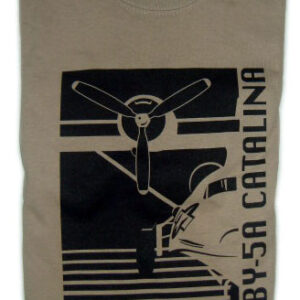
Privacy Overview

Catalina Yachts and Massey Yachts: A Journey of Excellence
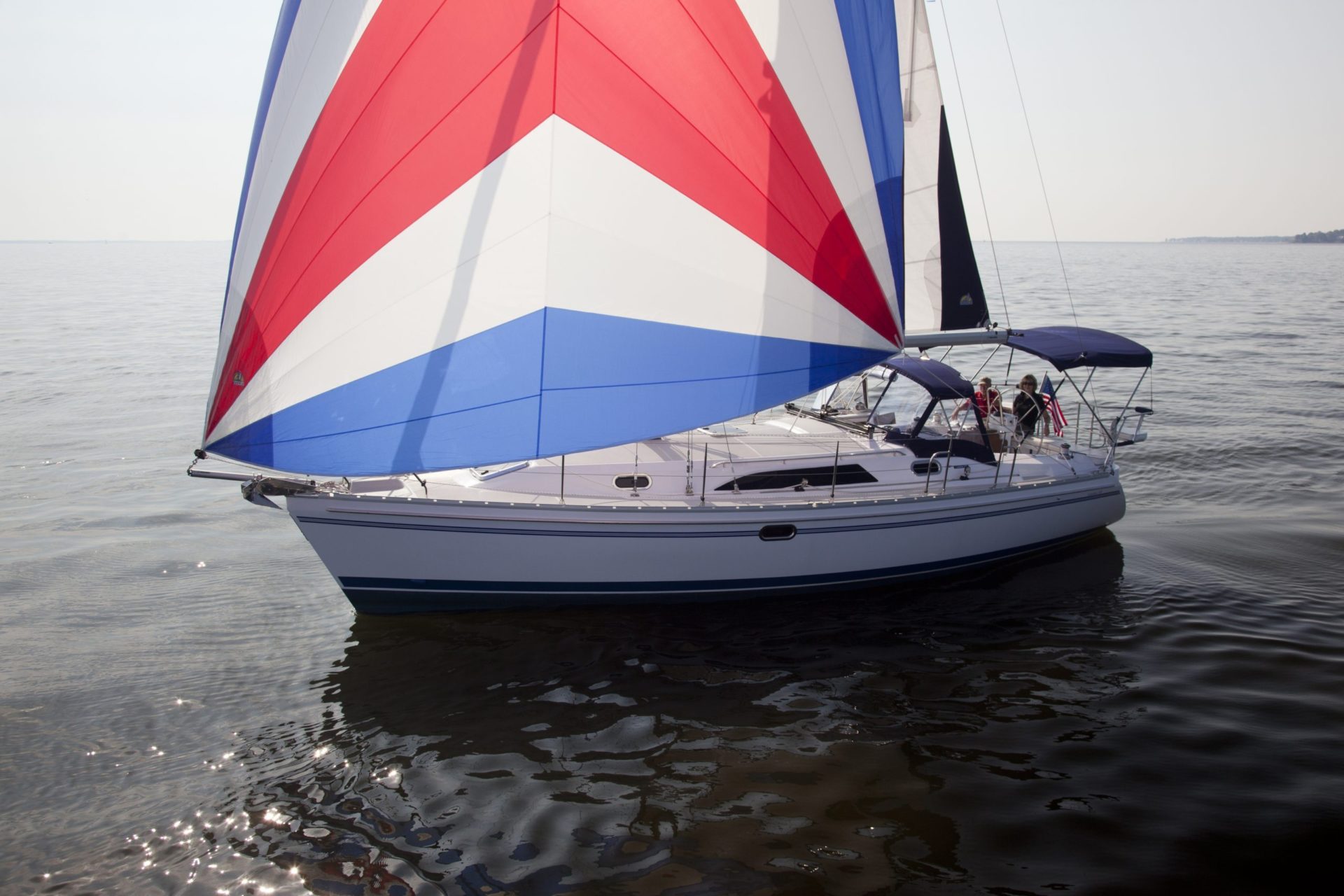
In the world of yachting, two names stand out for their commitment to quality, innovation, and customer satisfaction: Catalina Yachts and Massey Yachts. This article takes you on a journey through the history and achievements of these two industry leaders, exploring their unique relationship and the benefits it offers to yacht enthusiasts. Whether you're a seasoned sailor or just starting to explore the world of yachting, this comprehensive guide will provide you with valuable insights into these two remarkable companies.
The History of Catalina Yachts
The founding of catalina yachts.
Catalina Yachts was founded in 1969 by Frank Butler, a visionary entrepreneur with a passion for sailing. Butler's goal was to create high-quality, affordable yachts that would make sailing accessible to a wider audience. His first design, a 22-foot trailerable sailboat, set the standard for the company's future models, combining practicality, durability, and performance in a compact package.
The Evolution of Catalina Yachts
Over the years, Catalina Yachts has evolved to meet the changing needs and preferences of its customers. From its initial 22-foot design, the company has expanded its range to include a variety of models, each designed with the same attention to detail and commitment to quality that marked its first boat. Today, Catalina Yachts is known for its innovative designs, robust construction, and excellent value for money, making it a favorite among both recreational sailors and serious yachting enthusiasts.
The Impact of Catalina Yachts on the Boating Industry
Catalina Yachts has made a significant impact on the boating industry. With over 80,000 boats produced to date, it has not only introduced countless individuals to the joys of sailing but also set new standards for yacht design and construction. Catalina's influence can be seen in the many awards it has won, the loyalty of its customers, and the respect it commands among its peers in the industry.
The Introduction of the 5 Series of Catalina Yachts
One of the most significant milestones in Catalina's history was the introduction of the 5 Series. Launched in 2009, the 5 Series represented a major step forward in yacht design, incorporating many innovative features and setting new standards for performance, comfort, and safety. The success of the 5 Series confirmed Catalina's position as a leader in the yachting industry and paved the way for future innovations.

The Role of Massey Yachts
The history of massey yachts.
Established over four decades ago, Massey Yachts has grown from a small brokerage into a leading yacht sales and service company. With a professional sales team of 14 brokers, Massey Yachts has built a reputation for excellence, integrity, and customer satisfaction. The company's long-standing relationship with Catalina Yachts has allowed it to provide its customers with some of the finest yachts on the market.
The Range of Catalina Models Sold by Massey Yachts
As a leading broker of Catalina Yachts, Massey Yachts offers a wide range of models to suit every sailor's needs. From the compact and versatile Catalina 315 to the spacious and luxurious Catalina 545, Massey Yachts provides a comprehensive selection of both the Cruiser and Ocean Series. Each model combines Catalina's signature quality and performance with unique features to enhance your sailing experience.
The Geographical Coverage of Massey Yachts
With its headquarters in Florida, Massey Yachts serves a broad geographical area that includes Alabama, Mississippi, and Louisiana. This wide coverage allows the company to reach a diverse customer base and ensures that wherever you are in these states, you can access the exceptional service and quality yachts that Massey Yachts offers.
The Services Offered by Massey Yachts
Beyond selling new and pre-owned Catalina Yachts, Massey Yachts offers a range of services designed to enhance your yachting experience. These include:
- Outfitting new Catalina yachts to meet your specific needs and preferences.
- Exhibiting at boat shows, where you can explore the latest Catalina models and speak with knowledgeable brokers.
- Providing comprehensive customer support, ensuring that you have all the information and assistance you need to enjoy your yacht to the fullest.
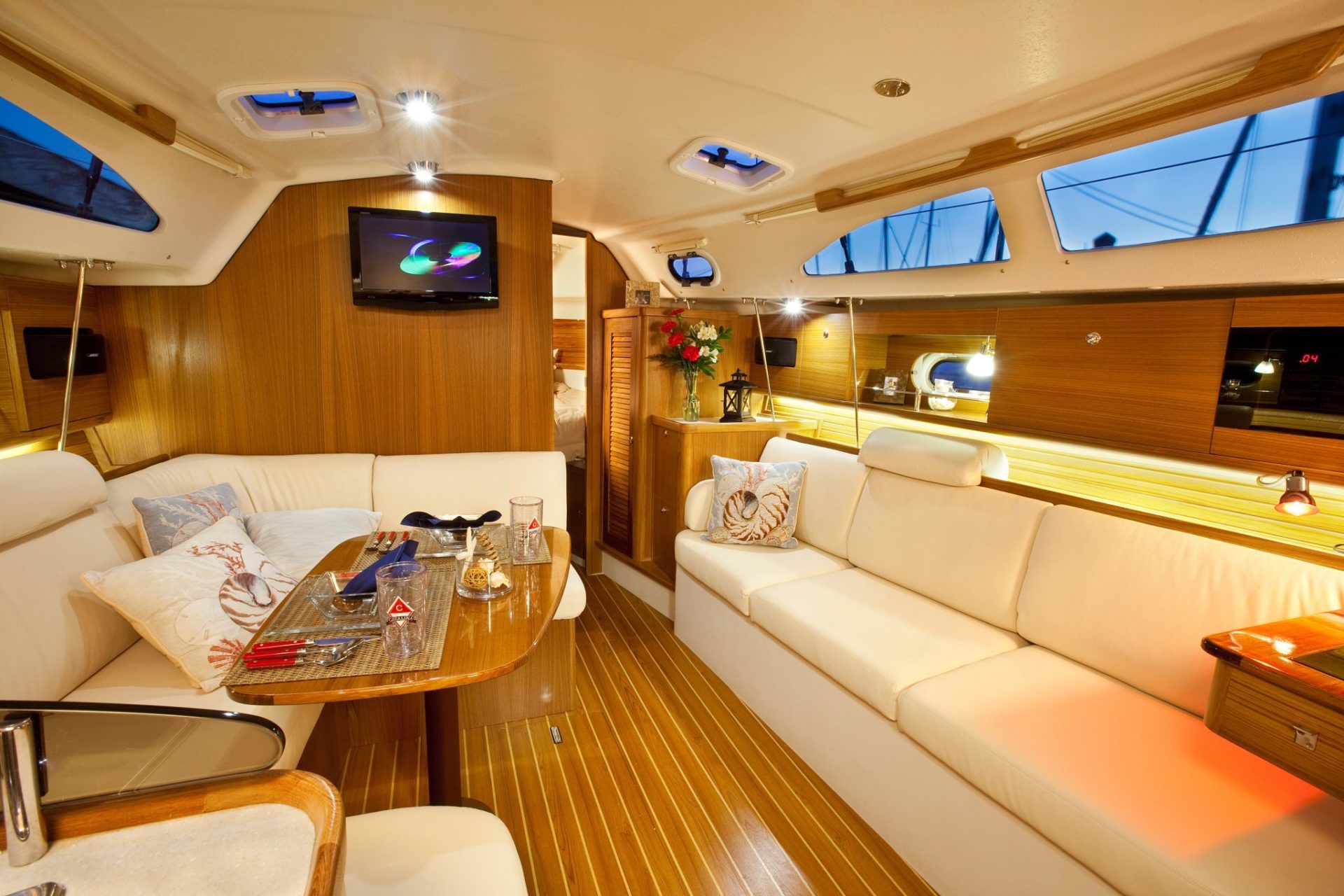
Massey Yachts: The Nation's Leading Catalina Broker
The specialization of massey yachts in selling catalina yachts.
Massey Yachts has carved out a niche for itself in the yachting industry through its specialization in selling Catalina Yachts. This focus allows the company to provide in-depth knowledge and expertise on Catalina models, ensuring that customers receive accurate information and personalized advice when choosing their yacht. Whether you're a first-time buyer or an experienced sailor looking to upgrade, Massey Yachts can guide you through the process with ease and confidence.
The Recognition of Massey Yachts as the Nation's Leading Catalina Broker
Massey Yachts' commitment to quality and customer satisfaction has earned it recognition as the nation's leading Catalina broker. This prestigious status reflects the company's deep understanding of Catalina Yachts, its extensive range of models, and its dedication to providing exceptional service. When you choose Massey Yachts, you're choosing a broker that is respected and trusted in the industry.
The Benefits This Specialization Offers to Customers
The specialization of Massey Yachts in selling Catalina Yachts offers numerous benefits to customers. These include:
- Access to a wide range of Catalina models, allowing you to find the perfect yacht to suit your needs.
- Expert advice and guidance from knowledgeable brokers who understand Catalina Yachts inside and out.
- Confidence in the quality and value of your yacht, backed by Massey Yachts' reputation as the nation's leading Catalina broker.
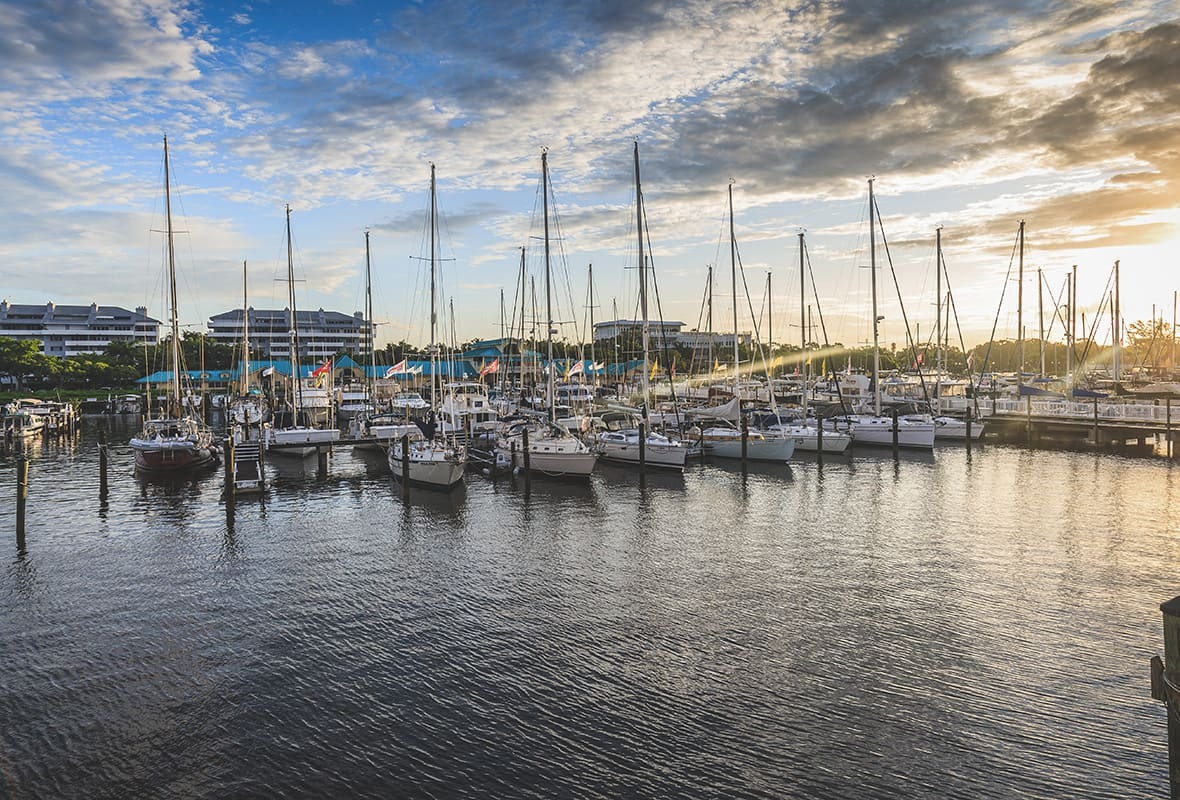
Navigating to Massey Yachts
An overview of the massey yachts website.
The Massey Yachts website is a comprehensive resource for anyone interested in Catalina Yachts. It offers detailed information on the various Catalina models, including specifications, features, and images. The website also provides information on the company's services, team, and history, giving you a complete picture of what Massey Yachts has to offer.
A Guide on How to Navigate the Website When Searching or Learning About Catalina Yachts
Navigating the Massey Yachts website is straightforward and user-friendly. If you're interested in Catalina Yachts, you can easily find them under the "Our Inventory" section. Each yacht listing provides detailed information, allowing you to compare different models and make an informed decision. If you need further assistance, the "Contact Us" page provides multiple ways to get in touch with the Massey Yachts team.
The Additional Resources Offered by Massey Yachts
In addition to its yacht listings, the Massey Yachts website offers a wealth of additional resources. These include the "Adventures in Yachting" video series, which provides insights into the yachting lifestyle, and a collection of customer testimonials that highlight the company's commitment to customer satisfaction. Whether you're a seasoned sailor or new to the world of yachting, these resources can enhance your understanding and enjoyment of Catalina Yachts.
Discover Your Dream Yacht with Massey Yachts
Embarking on your yachting journey is an exciting experience, and choosing the right yacht is a crucial part of that journey. With Catalina Yachts' commitment to quality and innovation, and Massey Yachts' expertise and dedication to customer satisfaction, you can be confident that you're making the right choice.
Whether you're a seasoned sailor or just starting to explore the world of yachting, Massey Yachts is here to guide you every step of the way. With a wide range of Catalina models to choose from and a team of knowledgeable brokers ready to assist you, your dream yacht is within reach.
Don't wait to start your yachting adventure. Call us today at (941) 723-1610 or use our contact form to get in touch with our team. Let Massey Yachts help you discover the joy of sailing with Catalina Yachts.
We’re Here To Help!
Contact us today, and we’ll help make your experience smooth sailing..

Catalina 36/375 International Association
You are here.
by Bob McCullough November, 1997 (edited December 2010)
Catalina 36! What thoughts are provoked when we hear those words spoken? When did Frank Butler (Catalina Yachts) build the first Catalina 36? When did the National Association come into being? When were the local fleets first formed?
To find the solution to these questions I went in search of answers. A call to Catalina Yachts elicited the answer that hull #1 was built in 1982 as a 1983 model. And as of November 1997, 1,687 Catalina 36s have been built! [Ed Note: Hull #2305, the last C36 made, was completed in November 2006]
In 1985, Mainsheet was in its third volume. Subscription to Mainsheet was through Catalina Yachts. Years before the establishment of the Catalina 36 National Association, Janet Herren of Bainbridge, WA served as the Mainsheet editor gathering tidbits from owners around the country. It wasn't until April of 1989 that the National Association was formed. Allan Elliot from Marina del Rey, CA took the initiative to put an ad in the August Mainsheet for prospective Catalina 36 association members and received forty-one responses before the next issue. He took on the responsibilities of Commodore, Secretary and Tech Editor while Garry Willis, also of Marina del Rey became the Rear-Commodore and Janet stayed on as Association Editor. They started trying to organize the different fleets by getting list of Catalina 36 owners and providing them to people around the country in order to make contacts. They went to work on developing a set of by-laws to organize the fleets. By February the national fleet had grown to over 100.
In February 1990, Fleet 1 was formed with 10 original member boats. Originally listed as being the Marina del Rey and King Harbor, CA area, with Garry Willis as Fleet Captain, Fleet 1 is now listed as Santa Monica Bay, CA. On April 13, skippers of Catalina 36s met at Shoreline Yacht Club in Long Beach to form Fleet 2 to cover the area of Long Beach, CA. Bob Butts was elected Fleet Captain.
So far, all the activity had been on the West Coast. Naturally, with the builder located in Woodland Hills, this was to be expected. West Coast domination wasn't to last very long, however. Bob McCullough's article about his new Catalina 36 in the May 1990 issue of Mainsheet ended with a call to all Catalina 36 in the Chesapeake Area to contribute to Mainsheet. In mid June Allan Elliott visited Back Yard Boats in Annapolis with a group of 10 Catalina 36 owners from that area and Chesapeake Bay Fleet 3 came into being. At the meeting Fleet 3's first captain Stan Coloff took on being interim Captain. Later Ed Hoffman was elected full time. A single fleet to cover over 100 miles of Bay was indeed a giant undertaking. Covering such a large area it did, Fleet 3 drew its members from New York, Pennsylvania, Delaware, Maryland and Virginia.
Around the same time frame, Fleet 4, Washington State, Puget Sound, was being organized by Lloyd and Judy Wiebe. This fleet has since disbanded and is in the process of re-organizing. Let's hope that Fleet 4 can make a comeback.
The Fleet 5 name was assigned to Connecticut and Long Island Sound and announced in the November issue of Mainsheet. Jean and Don Flintzer along with Ernie Ortiz were organizing it.
Already in 1990 the fleets were participating in their group activities. Fleet 1 held their first annual Show 'n Tell in May when they boarded each other's boats to "learn about the cleverness of Cat owners." They also attended the Catalina Rendezvous at Catalina Island in July. They had speakers at their meetings tell them about bottom paint and diesel engine care. Later Gerry Douglas, chief Designer of Catalina Yachts, talked to a SRO gathering of Fleet 1 members giving them advice from his encyclopedic mind of Catalina yacht details. Enough members participated in the Home Port Regatta at Marina del Rey that Catalina 36 had its own class. Fleet 3 held summer raft-ups and published its first newsletter that summer. Sandy Wagner of Fleet 3 also initiated the "Catalina Owners Association booth at the Annapolis Sailboat Show in October. Free one-year subscriptions to Mainsheet were given out.
Exactly when was the first C-36 National Regatta held? The first announcement for a National Championship Regatta appeared in the February 1991 issue of Mainsheet. This was to be held jointly with the C-34 National Association on August 23-25 at the Seal Beach Yacht Club in Long Beach, CA. The actual race entry form appeared in the May 1991 issue.
By then, Catalina 36 had authorized another fleet. Fleet 6 San Diego was formed with Jay Goodwin as Fleet Captain. With 10 boats attending the first organizational meeting at the Kona Kai International Yacht Club, Allan Elliott and his wife Elsie joined them to help in the organizational efforts. At that time we still did not have a regular technical column. Allan Elliot was answering letters and handling membership renewals as well as he could. That was not very surprising since the National Association was just barely one year old and still feeling its way. Along about the end of May 1991, Bob McCullough was asked if he would take on the job of Technical Editor. He said yes and is still doing the job; after all, Bob is "retired and has lots of time to do as little as possible." In the August 1991 issue of Mainsheet Bob started his first official column (he had written previous articles for Mainsheet) talking about his electrical upgrades on Felicity II.
The first Catalina 36 National Regatta was held August 25-27, 1991. Ken Dutcher and his crew won the Spinnaker Class with Paniola (cowboy in Hawaiian) and John Olson and his crew won the Cruiser Class on Katinka. It had taken almost a year of planning but it was a complete success. The partying, camaraderie and newfound friends were truly a wonderful experience.
With the National Association nearing its second birthday it was time for elections of new officers. Garry Willis became our new commodore and Don Kelly was elected Vice-Commodore. Ed and Beverly Hoffman filled the new office of Secretary/Treasurer. Janet Herren turned the job of Association Editor over to Marci Willis and Bob McCullough continued as Technical Editor.
In February of 1992 Mainsheet was 10 years old. The cover of the February issue was a collection of earlier Mainsheet covers. The magazine had developed into a beautiful, slick production magazine that represents all the Catalinas from the smallest Capri to the largest Catalina.
By 1992 we had added three more fleets: Fleet 7, Newport Beach and Dana Point, Fleet Captain Ken Dutcher; Fleet 8, Gulf Coast, organized under Randy Weaver; and Fleet 9, San Francisco Bay, CA, Fleet Captain Agusto Bianchi. Fleets 1, 3 and 6, all sound and very active had started their rotation of officers, each electing new ones for 1992. Fleet 1 continued to be most active with monthly meetings as well as on-the-water activities for 9 months out of the year (the envy of all the northern fleets). Letters were pouring in from around the country to Tech Editor Bob McCullough as he answered them in each issue of Mainsheet. By mid year Fleet 2 had reorganized and was captained by Mary-Anne Wilson. Fleet 5 participated in the awesome Operation Sail in New York Harbor on July 4th weekend witnessing the parade of tall ships and the New York City Macy's fireworks display from the water at night.
The C36 Nationals continued to be held in California. Racing was done under our July 1991 Second Edition of the Constitution, By Laws and Rules. The National Regatta Chairman was Past Commodore Allan Elliott as the 1992 Regatta was hosted by 1991 champ Ken Dutcher and Fleet 7 at the Balboa Yacht Club in Newport Beach. Sixteen Catalina 36s attended the regatta. 1992's winners were Mary-Anne Wilson, Spinnaker Division and Phil Rojas, Cruising Division. Meanwhile, on the East Coast Fleet 3 held its own Regatta with five boats participating and being won by Jeff and Sandy Wagner.
In 1993, the association officers changed again. Ken Dutcher was elected (railroaded) Commodore with Garry Willis becoming Past Commodore. Marci Willis stayed on as Association Editor and Bob McCullough was still writing the Tech Talk column. Actually Garry took over the job of Mainsheet Editor and Ed and Bev Hoffman remained as Secretary/Treasurer. The national association fulfilled another of its promised advantages of membership by offering a sizable discount on Martec feathering props to all members.
Fleet 1 moved its monthly meetings to the Santa Monica Yacht Club on Tuesday nights to avoid interfering with the Wednesday night "beer can races." Catalina 36 had the greatest representation at the Catalina Rendezvous "Pirates of the Catalinas" at Isthmus at Catalina Island in July. Fleet 2 hosted the National Regatta at the Long Beach Yacht Club in August with 12 boats entering. Mary Anne Wilson again took Spinnaker Division honors with Dave and Jan Polancic winning the Cruising Division. Fleet 7 hosted the second annual Fall Cruise to White's Cove in Catalina in October in which all three Los Angeles area fleets participated.
During the year the entire Mainsheet staff, Editor Jim Holder and Associate Editor Carol VandenBerg moved from California to Virginia, all the way across the country. Welcome to the East Coast and its four seasons. No more year-round sailing for them.
In 1994 the Association Officers again changed. The election process really works. Bob McCullough became Commodore (and still Tech Editor). Ken Dutcher moved to Past Commodore. Bob and Association Editor Garry Willis were able to meet along with Fleet 5 and Fleet 3 members at Sail Expo in Atlantic City, the start of a new tradition. Fleet 1 boasted of 32 members early in the year and grew to 42 by year's end while Fleet 9 came in with 36! The Nationals were held on the East Coast for the very first time. Arrangements were made to hold the regatta at Newport, RI in August. Fleet 5 and The Narragansett Bay Yachting Association hosted with the races conducted by the New York Yacht Club. Taking first place honors in a fleet of nine racers was Dave Cleverly. Following the regatta Thom Reeves was asked to become Association Editor to replace Garry Willis who had moved up to a Catalina 42. At the same time a Western Regional Regatta was held in Southern California to replace the National Regatta. Fleet 1 hosted it at the Windjammers Yacht Club. Phil and Ouida Rojas again won the regatta.
Also in 1994, the Association again undertook to revise the 1991 Constitution. There had been a number of ambiguities and some misspellings. After a lot of review and talk, the third revision was issued in February 1995. This revision spelled out the Association's wish to make a level racing field and to keep the ownership and racing costs at an affordable level. The new constitution also called for a re-definition of the officers and their responsibilities. We now have a Commodore, Vice-Commodore, Secretary/Treasurer, Past Commodore, and for the first time, the Technical Editor and the Association Editor became officers. They all comprise the Governing Board.
The officers for 1995 were Bob McCullough, Commodore; Jean Flintzer, Vice-Commodore; Ed and Bev Hoffman, Secretary/Treasurer; Ken Dutcher, Past Commodore; Bob McCullough, Technical Editor; and Thom Reeves, Association Editor. With most of the officers living on the East Coast a meeting/social event became a regular at Atlantic City's Sail Expo at Angelos Fairmount Tavern. It was co-hosted by the national association and Fleet 5.
In February of 1995 Fleet 10 in Hawaii was in the process of organizing. And by August of that year Fleet 11, Cape Cod, MA was organizing.
The huge success of the first East Coast Regatta prompted us to alternate coasts each year. The 1995 National Regatta returned to Long Beach Yacht Club and Nine Sails West in August. Our Commodore Bob McCullough attended and at Ken Dutcher's request skippered Paniolo to a win.
There was no 1996 regatta due to a glitch in scheduling. By now we had another local fleet. Fleet 12, Lake Michigan, had formed under the able leadership of Bill and Maria Wertz. Fleet 12 is part of the greater Lake Michigan Catalina Association. While participation in the Catalina Rendezvous had always been great at Catalina Island, Catalina Yachts began hosting an East Coast rendezvous. In 1995 the venue was Newport. But in 1996 they went to the Chesapeake to the Inner Harbor of Baltimore with some success even though inclement weather was a problem.
In 1997 Jean Flintzer was elected Commodore and Phil Rojas, Vice-Commodore. Phil hails from Manhattan Beach, CA. Then we had officer representation on both sides of the country. At the annual meeting at Sail Expo in Atlantic City the Vice Commodores, the Rojas', were flown in from California for the event. Fleet 12 hosted the 1997 National Regatta on Lake Michigan attended by Commodore Jean Flintzer and her husband Don. Ruth and Roger Teerman won the trophy.
In the summer of 1997 Ed and Bev Hoffman resigned as Secretary/Treasurer. The job was taken over by Fred and Dot Salzberg from Fleet 5. We thank Ed and Bev for their many years of service to the Association.
There are great plans afoot for the 1998. All the officers will meet again at Sail Expo with a special presentation for ex Secretary/Treasurers, Ed and Bev Hoffman. The National Regatta will be held in Long Island Sound in August at Pilots Point Marina hosted again by Fleet 5 and the Duck Island Yacht Club in Westbrook, CT.
The Catalina 36 family has been growing. Going into our tenth year we have strong, active fleets on both coasts as well as on Lake Michigan. According to our Tech Editor we now have boats and correspondents in the UK, Australia, Canada, The Netherlands and Hawaii. We are now an international organization and may soon change our name to IC36A, International Catalina 36 Association.
It is now December 2010. Several years have passed since I wrote this history. So much time has passed and the C36 is no longer built. There have been many changes to our beloved boats. There has been a so-called MK 1-1/2 with the sugar scoop stern. Then the MKII appeared with the same stern. There were changes to the interior as well,but the hull below the water line stayed the same. Not enough to make a great difference but it resulted in squatter stern. It was still a C36 though.
Another change was in the aft cabin. It was became a stand-up cabin with more room but I have heard it is still used mostly for storage. Another change is in the electrical systems. Better electrical panels have made it easier to handle upgrades and for the owners to install anything they want to put a heavier load on their batteries.
In-mast furling is now a standard and in-boom furling was also offered. There have been changes in propulsion. Whereas Universal-Medalist used to be the standard engine, Yanmar engines are on the C375. Westerbeke bought out Universal but they continued to make the Universal engines for Catalina.
Gerry Douglass, Vice-President of Catalina Yachts and the designer of the C36, brought out a C350 which the C36ers thought would go well with the 36, but no go. Now there is a C375 which has been welcomed by The C36IA, a boat that maybe can keep up with them. It seems very much as if they can. The new association is now called the Catalina 36/375 International Association, C36/375IA. Sounds pretty good to me.
There have been new fleets formed with appropriate growth in the existing fleets. They number from Fleet 1 through Fleet 12, no feet 13, and fleet 14 through Fleet 16. Besides the local fleets, we have members from all over the world. There are now East Coast and West Coast rendezvous taking place. Mainsheet, the Catalina owner’s magazine, has also grown in size and scope. The addition of a pull-out technical section is a much-used addition for all size Catalinas.
And special thanks to each of our dedicated Commodores:
- Allan Elliott 1989-1991
- Garry Willis 1992
- Ken Dutcher 1993
- Bob McCullough 1994-1996
- Jean Flintzer 1997-1998
- Phil Rojas 1999-2002
- Brian Giersch 2003-2004
- Dennis Stovall 2005-2006
- Tom Sokoloski 2007-2009
- Chic Lasser 2010
- Duane Ising 2011-2012
- Laura Olsen 2013-present
Copyright © 2024, Catalina 36/375 International Association
Theme by Zymphonies
- BOAT OF THE YEAR
- Newsletters
- Sailboat Reviews
- Boating Safety
- Sails and Rigging
- Maintenance
- Sailing Totem
- Sailor & Galley
- Living Aboard
- Destinations
- Gear & Electronics
- Charter Resources
- Ultimate Boating Giveaway


End of an Era at Catalina Yachts
- By Cruising World Editors
- Updated: December 22, 2020
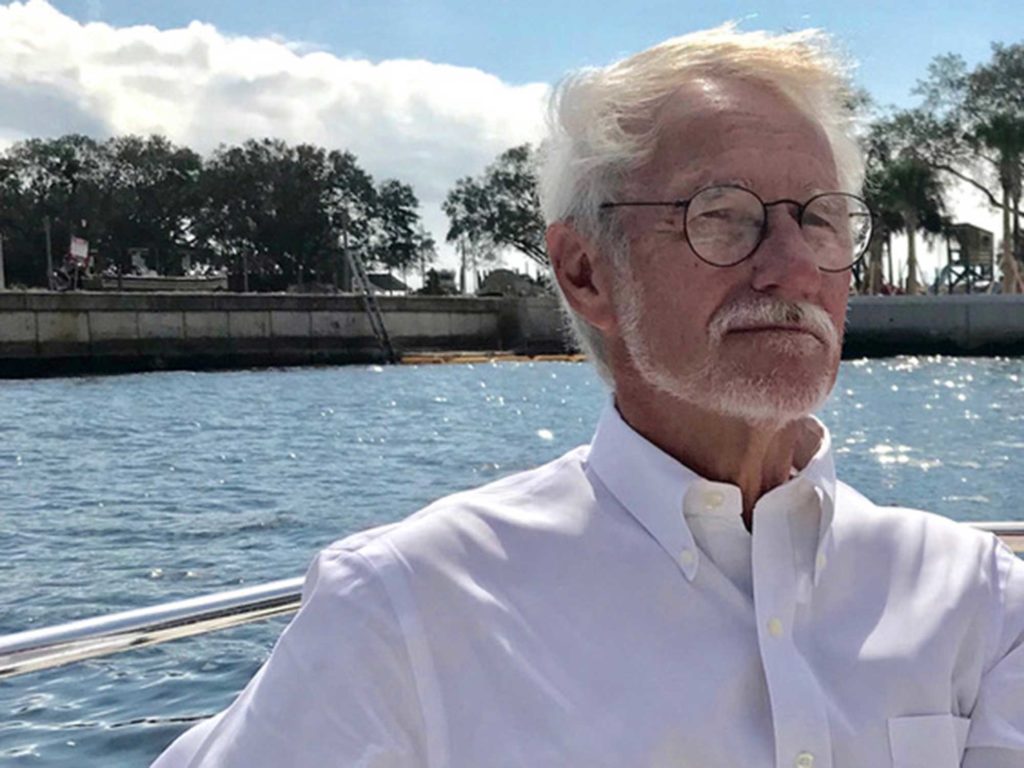
Changes are afoot at Catalina Yachts, America’s largest sailboat builder. Longtime designer and company executive Gerry Douglas has announced that after 45 years with the company, he plans to retire in 2021.
Douglas’ work over the years includes more than 40 designs and the construction of some 60,000 boats built by Catalina in both the California and Florida manufacturing facilities.
Douglas said he will be on hand to finish several ongoing projects, and that a future management team is being assembled. Company founder and owner, Frank Butler, passed away in November.
“I’m grateful to have had the opportunity to do what I love every working day of my life,” said Douglas in a release issued by Catalina this week. “But what is most important to me are the relationships I’ve enjoyed with marine industry colleagues, as well as passionate Catalina owners throughout the world.”
The Catalina announcement continues:
“Douglas says a few of the high points of his career include his first boat designed in 1982, the Catalina 36, of which 2,305 were built.
“Most recently, the Catalina 545, now the flagship of the Catalina fleet, was the overall winner of the 2020 Industry Boat of the Year Award for Cruising World magazine.
“Bookended by those two designs, Douglas delivered the 445 and the 425. Over the course of his long career, his designs won more than 13 Boat of the Year awards, and multiple Best Boat awards from Sail Magazine.
“Gerry Douglas will always be appreciative to the late Frank Butler, founder of Catalina Yachts, for giving him the chance to pursue a long and fulfilling career in yacht design and manufacturing.
“His retirement plans include continuing his work on the Public Arts Commission, yacht club committees, cycling, sailing, racing, cruising and spending time in Florida and at his cottage on the coast of Maine.”
- More: catalina yachts , people
- More People

Storm-Tossed, Lobster-Blessed: A Culinary Cruising Tale

Around Alone

From Paradise to Medical Emergency: A Bahamas Nightmare Turns Lesson Learned

Free Medical Advice: The Unwarranted, Unprofessional Edition
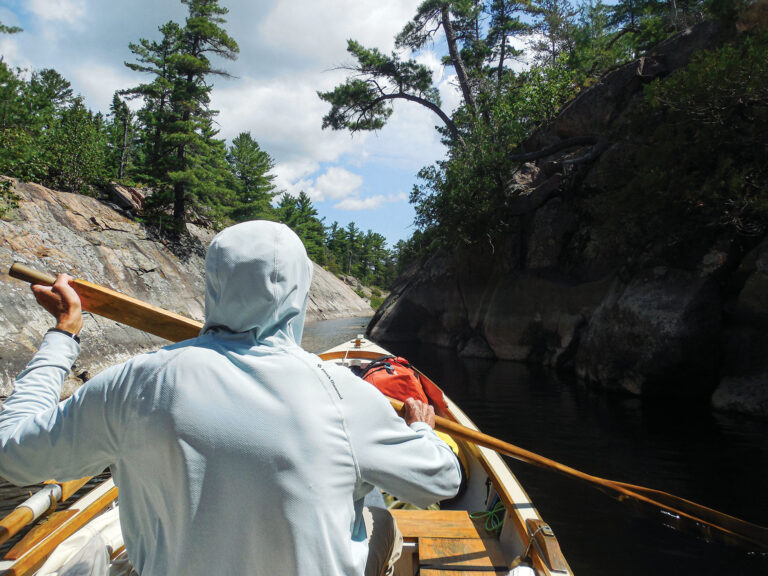
Minimalist Cruising: Georgian Bay by Dinghy

Best Practices for Boat-Show Shopping

Savoring Superior: A Great Lakes Cruise To Remember
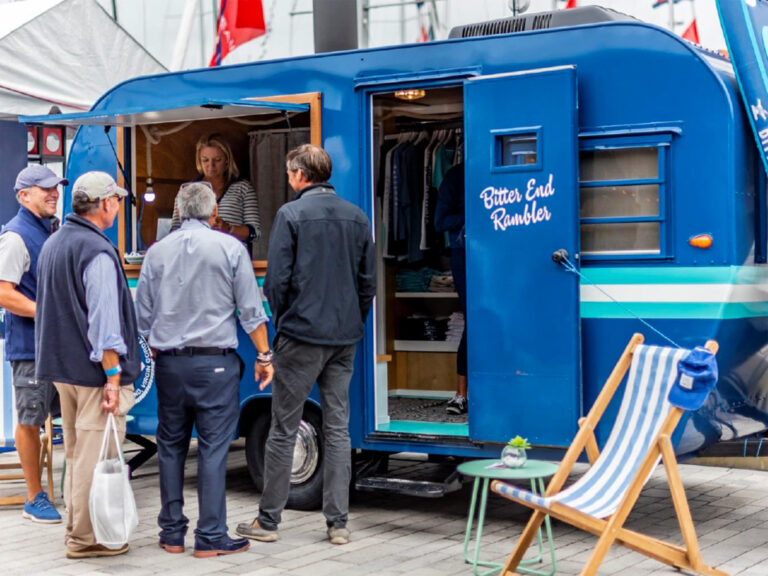
Point Your Compass Due South, Bitter End Yacht Club Reopens October 23rd.
- Digital Edition
- Customer Service
- Privacy Policy
- Terms of Use
- Email Newsletters
- Cruising World
- Sailing World
- Salt Water Sportsman
- Sport Fishing
- Wakeboarding
| ') } function showText1(){ document.write(r_text1[r]); } function showLink0(){ document.write(' ') } //--> |

| Established in 1996 | Thursday, September 19, 2024 |
| --> --> |
| ') } function showText2i(){ document.write(r_text2i[r]); } function showLink2i(){ document.write(' ') } //--> |
| Catalina Yachts - An Emerald In The Art Of World Yachting | ||
| ') } function showText3i(){ document.write(r_text3i[r]); } function showLink3i(){ document.write(' ') } //--> |
| Today's News June 14, 2023 | |





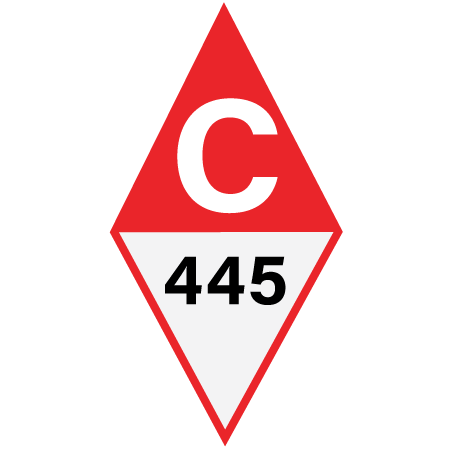
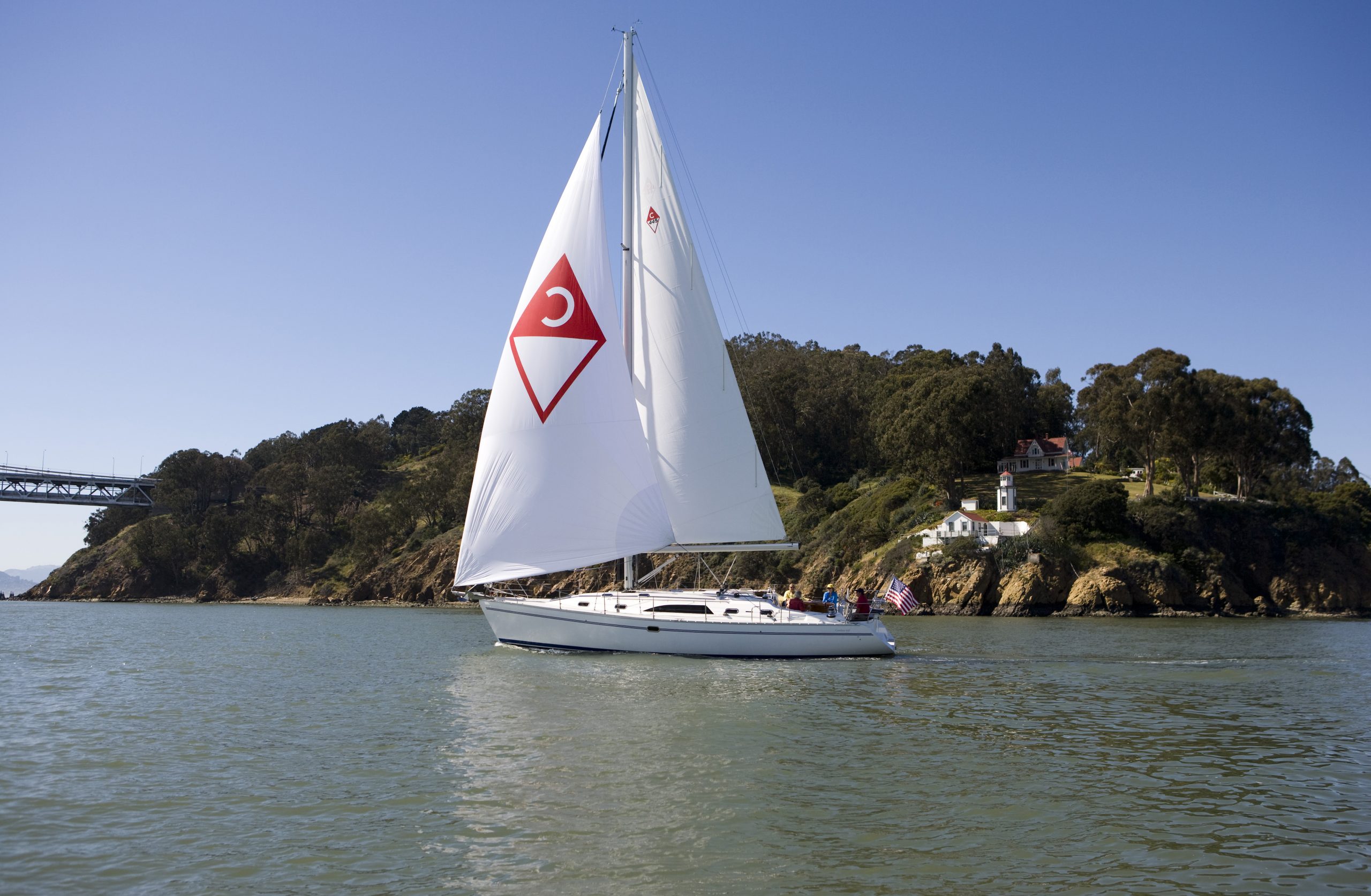
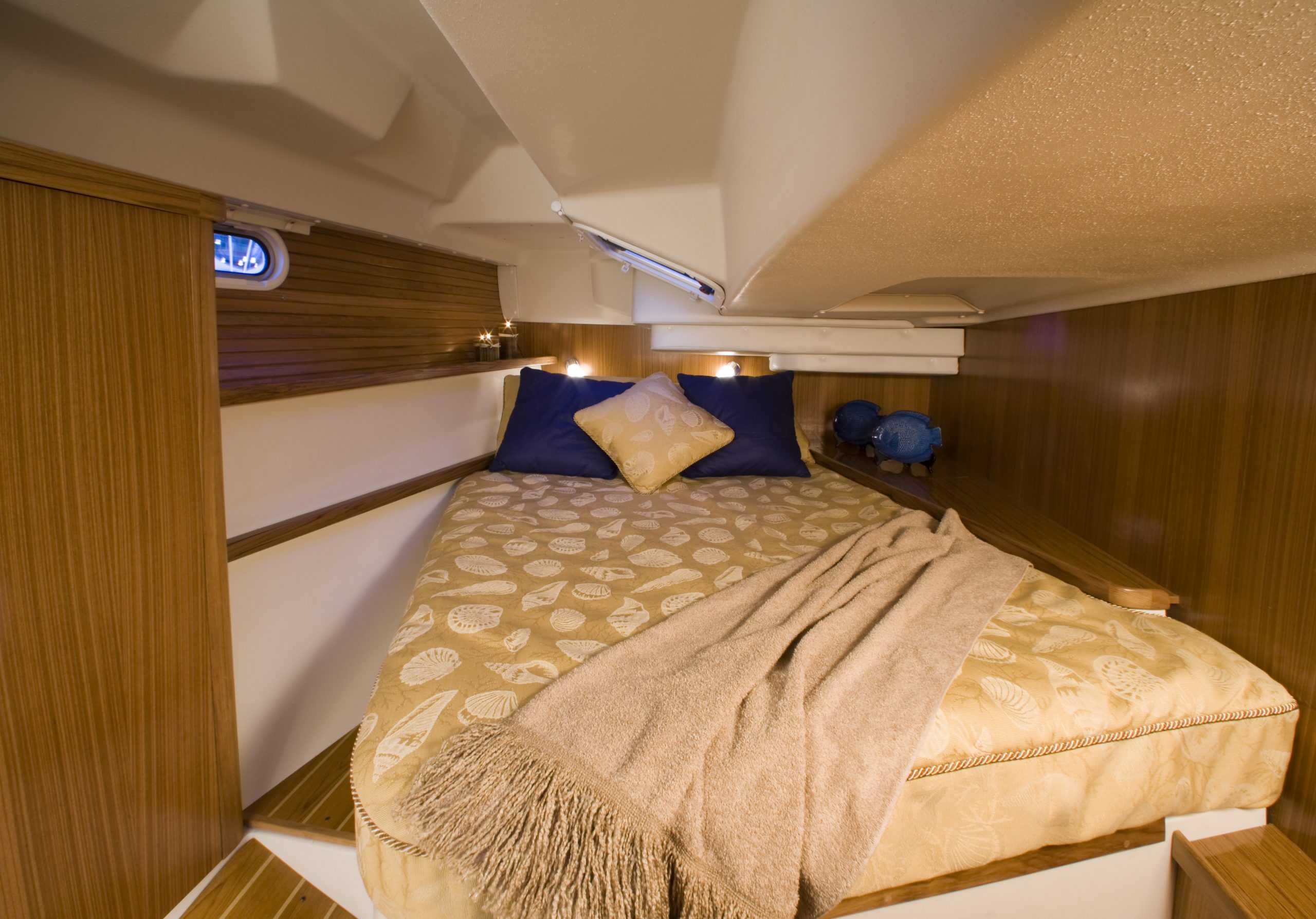
%20early%2020th%20century.jpg)
COMMENTS
CHRONOLOGICAL HISTORY. July 1969 Catalina´s first model, the Catalina 22, is built in North Hollywood, CA. Company owner Frank Butler hopes to build 100 boats if all goes well. March 1970 Catalina´s second model, the Catalina 27, is introduced following the success of the Catalina 22.
Catalina 27 racing on San Francisco Bay.. Catalina Yachts is a U.S.-based builder of fiberglass monohull sloop-rigged sailboats ranging in sizes from eight to 54 feet in length. It was founded in 1969 in Hollywood, California by Frank Butler. [1] Catalina Yachts is one of the largest boat manufacturers in the world, with over 80,000 boats manufactured to date. [2]
The official publication for thousands of Catalina Yachts sailboat owners around the world. LEARN MORE. FORGING AHEAD. From the past 50 years, and to the next 50, Catalina is devoted to providing owners and dealers with quality and value that has made Catalina America's largest sailboat builder. ... History. Brochure Archives. Associations ...
Founded by Frank Butler. In sheer numbers sold, Catalina Yachts is certainly the most successful builder of sailboats ever in the US, and possibly the world. Time line extract from the company's website: July 1969-Catalina's first model, the Catalina 22, is built in North Hollywood, CA. Company owner Frank Butler hopes to build 100 boats if all goes well. March 1970-Catalina's second ...
Catalina has been continuously producing yachts for 50 years. Catalina is owned, designed and built in America under the same ownership since day one. Catalina resale values and customer loyalty are among the highest in the industry. Dollar for dollar and feature for feature Catalina is a better, safer sailing yacht.
The sailing community this week lost a giant among the ranks of production boat builders. Frank Willis Butler, president and chief executive officer of Catalina Yachts, passed away November 15, 2020 in Westlake Village, CA, due to unexpected complications from a recent illness. In making the announcement, Catalina said, "We extend our most ...
The Catalina 27 is a small recreational keelboat, built predominantly of fiberglass. It has a masthead sloop rig, an internally-mounted spade-type rudder and a fixed fin keel. It displaces 6,850 lb (3,107 kg) and carries 2,700 lb (1,225 kg) of lead ballast. [1][2] Designed for inland sailing and not ocean passages, the boat's hull is made from ...
A brief type history by David Legg. The PBY Catalina series of flying boats was originally conceived to meet a military requirement and its development built on Consolidated's experience with earlier flying boat designs. These earlier types had included the commercial Model 16 Commodore and the military Model 22 Ranger/P2Y series.
In the world of yachting, two names stand out for their commitment to quality, innovation, and customer satisfaction: Catalina Yachts and Massey Yachts. This article takes you on a journey through the history and achievements of these two industry leaders, exploring their unique relationship and the benefits it
A call to Catalina Yachts elicited the answer that hull #1 was built in 1982 as a 1983 model. And as of November 1997, 1,687 Catalina 36s have been built! [Ed Note: Hull #2305, the last C36 made, was completed in November 2006] In 1985, Mainsheet was in its third volume. Subscription to Mainsheet was through Catalina Yachts.
Notes. With more than 6000 sold, the Catalina 30 is one of the most successful production sailing yachts in history. During the long production run of this basic model there were a great number of variations with standard and tall rig configurations, each with a bowsprit option, and also including shoal, wing and deep fin keels.
The launch of the 6 Series is a continuation of more than 50 years of pushing the boundaries of yacht design and performance. Catalina Yachts remains dedicated to our core values of quality, innovation, and customer satisfaction. We are excited about the future and introducing new models that will further enhance the award-winning Catalina ...
The Catalina announcement continues: "Douglas says a few of the high points of his career include his first boat designed in 1982, the Catalina 36, of which 2,305 were built. "Most recently, the Catalina 545, now the flagship of the Catalina fleet, was the overall winner of the 2020 Industry Boat of the Year Award for Cruising World magazine.
Catalina Yachts is one of the world's leading yacht builders, renowned for its quality and reliability. In this article, we'll take a look at the history of the company, the main yacht models, and the features and innovations that make Catalina Yachts products unique. History of Catalina Yachts Catalina Yachts was founded by Frank Butler in 1969.
Donetsk (UK: / d ɒ n ˈ j ɛ t s k / don-YETSK, [1] US: / d ə n-/ dən-; [2] [3] Ukrainian: Донецьк [doˈnɛtsʲk] ⓘ; Russian: Донецк [dɐˈnʲetsk] ⓘ), formerly known as Aleksandrovka, Yuzivka (or Hughesovka), Stalin, and Stalino, is an industrial city in eastern Ukraine located on the Kalmius River in Donetsk Oblast, which is currently occupied by Russia as the capital of ...
This regress looks even more staggering considering Donetsk's and Luhansk's not-so-ancient history. The cities were founded by two Brits. Children evacuated from the Donetsk region, the ...
The 445 from Catalina incorporates crisp, contemporary styling with proportions and features that make Catalinas comfortable and secure underway and on the hook. Based on a new hull design with a long waterline and moderate beam and freeboard, the 445 has excellent performance potential. The hull form is optimized to provide the gentle ...
Donetsk, city, southeastern Ukraine, on the headwaters of the Kalmius River. It is the capital of Donetsk oblast (province) and the most prominent city in the Donets Basin industrial region. In 2014 Donetsk was occupied by Russian-backed militants who claimed to represent the self-proclaimed Donetsk People's Republic.
Donetsk [Донецьк; Donec'k]. Map: VI-18, DB Map: DBIV-3.City (2020 pop 908,500), called Yuzivka until 1924, then Staline or Stalino until 1961. Donetsk was the administrative center of Donetsk oblast until April 2014, when it was captured by the Russia-supported separatists to become the capital of their self-proclaimed 'Donetsk People's Republic' (DPR).